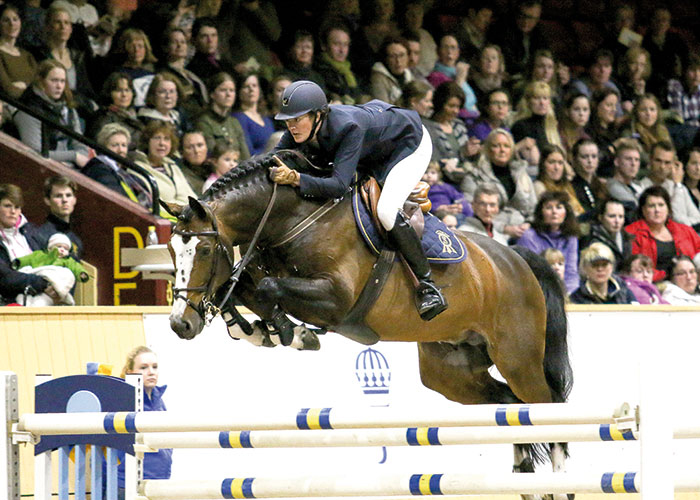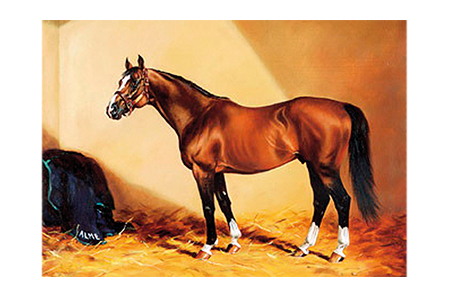
1966 – 1991, 165 cm Bay
Served France 1971-74; Zangersheide 1975-85, France 1986-1991
Breeder – Alphonse Chauvin
The greatest single influence on showjumping breeding has been the French stallion, Ibrahim (The Last Orange / Porte Bonheur) and his most influential son has been the great Almé, who was out of a mare, Girondine by the Thoroughbred, Ultimate.
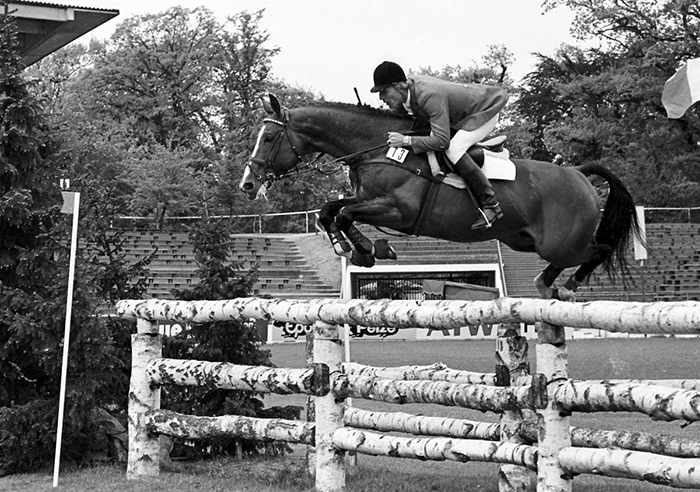
Almé in the competition arena….
Thirty years after his death, Almé continues to influence showjumping at the highest level. The most successful sire at the Tokyo Games was Chacco-Blue with five representatives, but the most successful of those representatives, Explosion W, is out of a mare by the Almé grandson, Baloubet de Rouet.
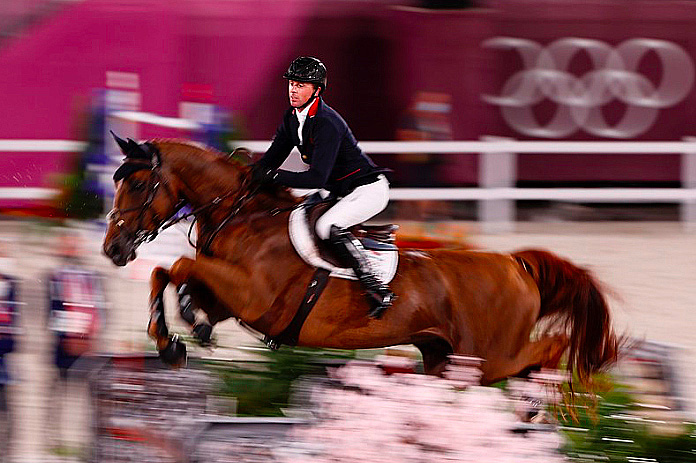
Explosion W out of a mare of Almé breeding
The stallions with the next largest group are Casall (Caretino / Lavall I) and Kashmir van Schuttershof (Nabab de Rêve / Tenor Manciais) with three each. Nabab de Rêve is a great grandson of Almé.
In the 2007-2008 edition of Monneron, Bernard le Courtois, after spending many hours on his computer, produced a list of the top 75 jumping stallions in the world, on the basis of the FEI list of the top 2515 jumping horses in international competition. This survey confirmed Almé’s pride of place, for he was responsible for 17 of the 57 leading stallions on the leaderboard. Four of these stallions were by Jalisco, the most important of which is Quidam de Revel, who headed the standings with 48 representatives. Quidam himself had two of his sons on the leader board, Nabab de Rêve and Guidam. Another Jalisco son, Papillon Rouge is ranked equal sixth in the world with 26 winners. Jalisco B, despite his death at a relatively young 19 years of age, was in 30th place on the leaderboard with 10 representatives.
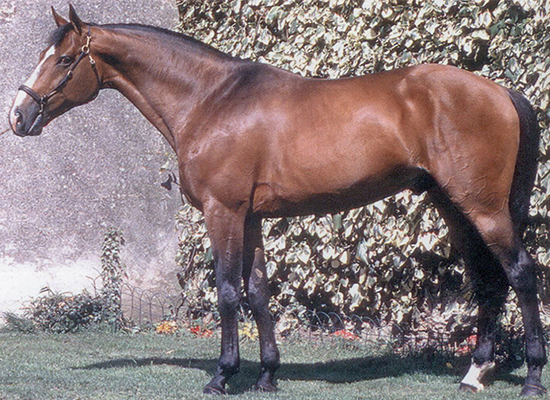
Quidam de Revel
Almé was also influential in Germany and The Netherlands. His grandson, Acord II (by Ahorn Z) was in 13th place with 16 winners. In Holland, Almé’s son, Animo ranks 19th with 12 winners. Animo’s son, Andiamo Z is ranked 64th with 5 winners.
Bernard has every reason to be proud of the Almé legacy, since he was the one who rescued the great stallion from the clutches of Belgian breeder, Léon Melchior – hence the ‘Z’ sometimes tacked – wrongly – to his name since. Melchior had nothing to do with his breeding, he was already an established sire in France when Melchior acquired Almé in 1975.
Let Bernard tell the tale, since he is not only a leading breeder of jumping horses, but he is also an accomplished writer…
“The French breeders and riders became aware of the enormous loss represented by Almé’s exportation, but few breeders were prepared to go abroad to have their mares covered. However some made the effort in 1991 and thanks to them we have several five and six year olds in competition. In the meantime Almé had been operated on for an inguinal hernia and in 1984 became mon-orchid. The Dutch then sold him and he returned to Belgium.”
“But what, I hear you say, were the French doing? What were they waiting for to bring their stallion home? Particularly when they had several opportunities to do so.”
“An offer had been made by the UNIC on behalf of the National Stud Farms, I remember the offer being F350,000. A ridiculous sum (double the price of a 3 year old at the St Lô Stallion sale) for the best stallion in the World, even if he was 18 years old and mon-orchid.”
“At the time I was the Chief Editor of the magazine L’Eperon. I had heard of this offer and of Almé’s return to Zangershiede, and decided to go there myself to see this dream stallion at last, having been too young to have seen him in France.”
“So I went to Belgium, between Liege and Aix La Chapelle, and realised that despite his age and far from calm life, Almé was still an admirable horse. I also learnt that two offers had been made for him, not from France, but by Americans and Venezuelans. On one side there was an offer of big shiny dollars and on the other, thousands of acres of Pampas.”
“What could I, a modest stud farmer, a passionate but poor breeder, do faced with such superpowers? I knew no rich patron as fanatic about breeding as myself, and no bank would have lent me enough money to repatriate Almé. But the idea became a target and then an obsession.”
“A few months beforehand, on my return from the Olympic Games at Los Angeles, I had managed to retrieve a 17-year-old stallion I liked a lot, the Thoroughbred, Laudanum. He had been forgotten and sent to the south west of France and had only covered nine mares in all in 1984. To acquire him I had applied a principle common to the racing world, ie. sale to Shareholders.”
“Laudanum’s syndicate had succeeded and the following year he had covered 63 mares. Pleased with my success I decided to use the same principle to save our genetic heritage and bring back Almé to French Breeders. Negotiations were long and difficult. I often grew depressed about the attitude of the people I was dealing with, who did not keep their word and refused to sign any contract.”
“The 1985 breeding season was wasted for us, Almé stayed in Zangersheide.”
“The Americans were willing to pay a lot of money for Almé. It should be remembered that his son, Galoubet, had been bought by syndicate in the USA one year before, for the sum of $2,000,000. At a time when the dollar was worth 10 Francs, this represented 20 million Francs. They could afford to be stubborn. However Almé’s weaknesses were to my advantage. I won the first round of the fight. Almé could not go to the USA because he showed positive on a biabose test. Unwilling to give up completely the Americans decided to leave Almé in Belgium and import his frozen sperm. Second round won, Almé’s sperm could not be frozen!”
“The Americans gave up the fight leaving the Venezuelans and their acres of Pampas. Here dialogue won the day. To export a stallion like Almé to South America was nothing less than a burial. I was left with three points to argue with: French breeding, international commerce and the financial structure that was to repatriate Almé.”
“The person with whom I was negotiating accepted the principle but still would not sign the contract allowing Almé’s return. Negotiations had been going on for nine months. I was furious and about to abandon the idea when, whilst at the Fontainebleau European Championships in 1985, I issued a deadline. After several heated discussions I left Fontainebleau with my contract signed.”
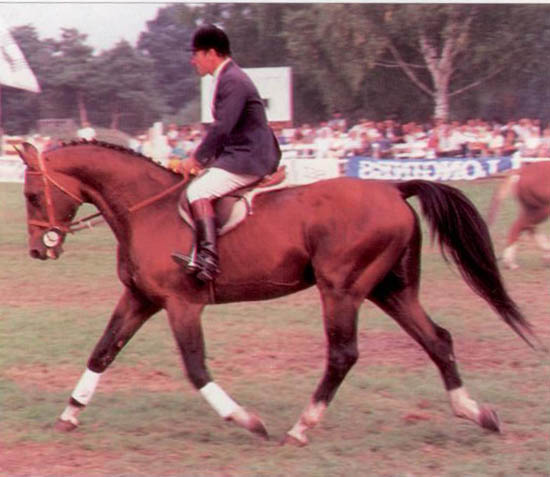
Almé
Even with Almé safely back on French soil, Bernard had a battle to establish the elderly stallion:
“Almé was to return to France. His official comeback was to be a month later at the Dinard European Championship. My incredible gamble had been won, I announced in the magazine Almé’s amazing and unhoped for comeback.”
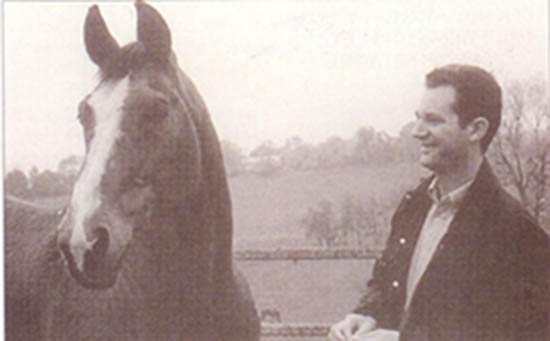
Almé and Bernard
“Almé’s comeback must have disturbed quite a few people. I heard so much rubbish, either directly or repeated to me, from people who are meant to be authorities in the horse world and who I believed to be intelligent or at least reasonable.”
“According to them Almé was little more than a rocking horse, and sterile to boot! Obviously, as a tenderfoot, I was made out to be a fool, if not worse.”
“However Almé’s presentation put things in place and silenced more than a few. Almé, then 19 years old, was on dazzling form. I’ll always remember his presentation and the admiring gaze of hundreds of people passing the message, ‘It’s Almé’.”
“Accompanied by Handel’s magic Saraband, Almé made his comeback on the grounds at Dinard in front of thousands of spectators entranced by his beauty and the charisma of the horse whose reputation was at its peak.”
“I admit that the emotion brought tears to my eyes. A moment of great satisfaction and pleasure: pleasure in the beauty of the scene and the satisfaction in the work accomplished. False modesty aside I was also very proud.”
“The follow up was just as exciting. Shares in Almé were a great success. There were 70 – 80 shares for sale at F20,000 (today this seems cheap but in six years horse prices have greatly increased). Within a few days all the shares were sold and the money raised to buy Almé.”
“In the space of a few weeks I received almost 400 requests to buy shares. Real Almé fans contacted me unfortunately too late. Every day I had to return cheques arriving too late. Some were even signed blank accompanied by a note to say: ‘I’ve heard that Almé is for sale to a syndicate, I don’t know the conditions but please keep me one or two shares and fill in the enclosed cheque’.”
“Incredible, this enthusiasm and confidence were a great comfort to me. It was without doubt this owners association which made me decide to make the move to Normandy and set up as a stallion breeder.”
“During 1986 – 87 Almé’s fresh sperm was used for artificial insemination, 100 mares per season. Mares came from all over France as well as from Belgium, Holland, Great Britain, Switzerland and Italy. In 1988-89 I limited him to 80 mares and in 1990 to 60 because of his age and state of health. Out of the 420 mares covered during five years, with an average fertility rate of 78%, many products were exported and roughly 20% of the mares covered gave birth abroad (foreign mares or mares in foal exported) added to these are the dozens of Almé foals of all ages exported to Italy, Belgium and Sweden over the past five years…”
“It should also be noted that Almé foals are not precocious, needing to be patiently conserved and not shaken around at the age of four. Observe their elders, Galoubet, I Love You or Jalisco who were hardly out at the age of four. Only at five years old were they beginning to be noticed. The future will smile at those who are patient with their mounts. However, despite the numerous exports and mares kept for breeding at three years (some of whom will appear the late five year olds next year) there were 12 Almé products in the 1991 Fontainebleau final.”
“Almé, once named by a journalist the “Golden Goose” was retired in August 1990.”
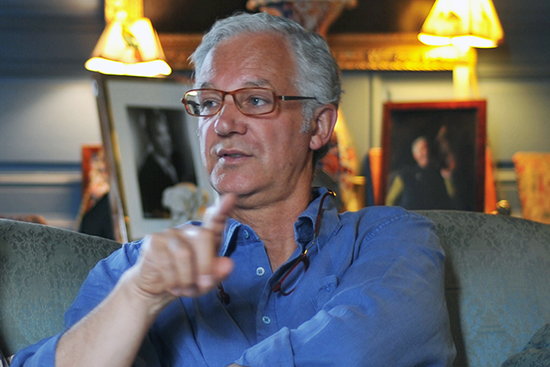
“It gave me the great satisfaction to see him finish his days with me at the Brullemail stud farm. From my office, where I sit to tell you this story, I used to see his head over his box door every day, so expressive despite his age. I could hear his high pitched neigh, so unusual, like a dolphin, as the mares crossed the courtyard or came in from pasture.”
Is Almé still relevant? Just a month or so ago, I was in s’Hertogenbosch for the 2023 KWPN stallion show. A new face in the sire’s lineup this year was the seven-year-old 1.40m jumper, La Costa. Out of his first crop, La Costa ES presented five at the pre-selection, with four getting the nod for the second round. All four are owned by La Costa’s breeder Egbert Schep who had a total of nine colts qualified for den Bosch.
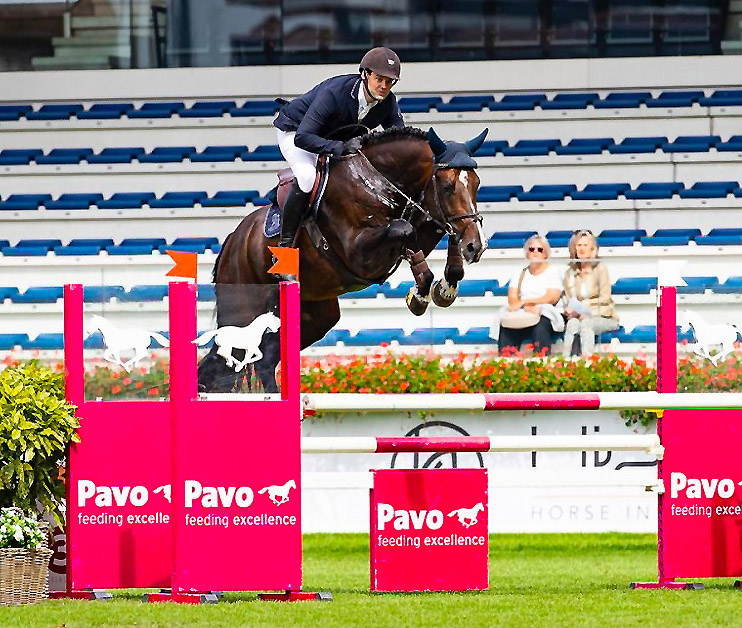
La Costa
And sure enough, there’s Almé blood flowing in the new star’s veins. La Costa is by Mosito van het Hellehof, by the Diamant de Sémilly son, Elvis ter Putte who is out of Ukas ter Putte by Darco out of a Quidam de Revel mare. Mosito is out of a Nabab de Rêve mare, who is out of a mare by Gratanus (Grannus / Pilot).
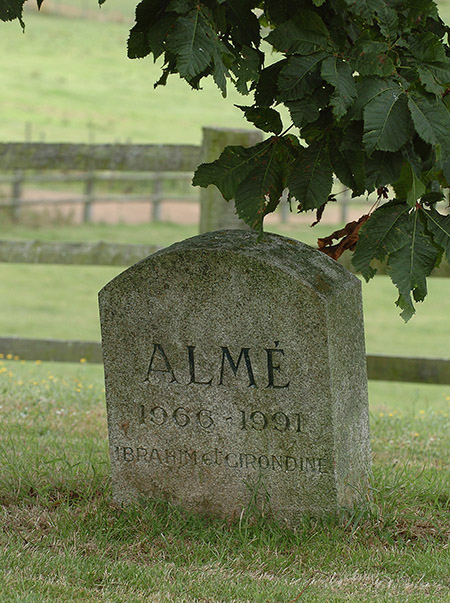
The Sporthorse breeding world has many reasons to thank Bernard le Courtois, not least is his feat of saving the great stallion and bringing him back to France…
Interested in finding the Almé bloodlines for your mare in Australia for the upcoming season? Go to www.ihb.com.au and search for stallions who carry them – stallions like Balou du Rouet:
